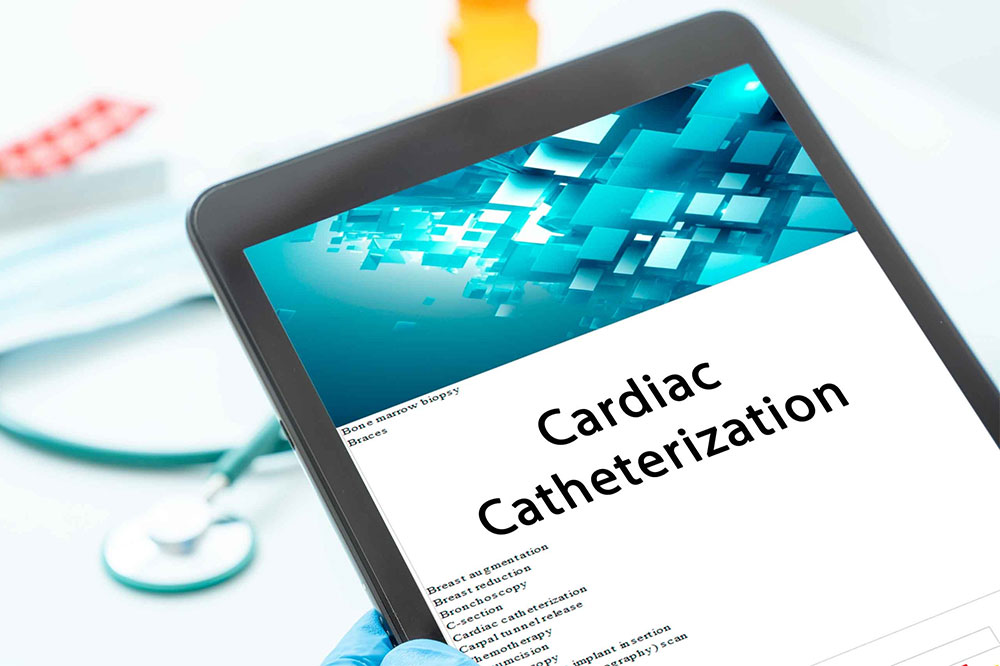Everything you need to know about heart disease
Unlike cardiovascular disease, which describes problems with the blood vessels and circulatory system as well as the heart, heart disease refers to issues and deformities in the heart itself.
According to the Centers for Disease Control (CDC), heart disease is the leading cause of death in the United Kingdom, United States, Canada, and Australia. One in every four deaths in the U.S.occurs as a result of heart disease.

- One in every four deaths in the U.S. is related to heart disease.
- Coronary heart disease, arrhythmia, and myocardial infarction are some examples of heart disease.
- Heart disease might be treated with medication or surgery.
- Quitting smoking and exercising regularly can help prevent heart disease.
Types

There are many different types of heart disease.
There are many types of heart disease that affect different parts of the organ and occur in different ways.
Congenital heart disease
This is a general term for some deformities of the heart that have been present since birth. Examples include:
- Septal defects : There is a hole between the two chambers of the heart.
- Obstruction defects: The flow of blood through various chambers of the heart is partially or totally blocked.
- Cyanotic heart disease: A defect in the heart causes a shortage of oxygen around the body.
Arrhythmia
Arrhythmia is an irregular heartbeat.
There are several ways in which a heartbeat can lose its regular rhythm. These include:
- tachycardia, when the heart beats too fast
- bradycardia, when the heart beats too slowly
- premature ventricular contractions, or additional, abnormal beats
- fibrillation, when the heartbeat is irregular
Arrhythmias occur when the electrical impulses in the heart that coordinate the heartbeat do not work properly. These make the heart beat in a way it should not, whether that be too fast, too slowly, or too erratically.
Irregular heartbeats are common, and all people experience them. They feel like a fluttering or a racing heart. However, when they change too much or occur because of a damaged or weak heart, they need to be taken more seriously and treated.
Arrhythmias can become fatal.
Coronary artery disease
The coronary arteries supply the heart muscle with nutrients and oxygen by circulating blood.
Coronary arteries can become diseased or damaged, usually because of plaque deposits that contain cholesterol. Plaque buildup narrows the coronary arteries, and this causes the heart to receive less oxygen and nutrients.
Dilated cardiomyopathy
The heart chambers become dilated as a result of heart muscle weakness and cannot pump blood properly. The most common reason is that not enough oxygen reaches the heart muscle, due to coronary artery disease. This usually affects the left ventricle.
Myocardial infarction
This is also known as a heart attack, cardiac infarction, and coronary thrombosis. An interrupted blood flow damages or destroys part of the heart muscle. This is usually caused by a blood clot that develops in one of the coronary arteries and can also occur if an artery suddenly narrows or spasms.
Heart failure
Also known as congestive heart failure, heart failure occurs when the heart does not pump blood around the body efficiently.
The left or right side of the heart might be affected. Rarely, both sides are. Coronary artery disease or high blood pressure can, over time, leave the heart too stiff or weak to fill and pump properly.
Hypertrophic cardiomyopathy
This is a genetic disorder in which the wall of the left ventricle thickens, making it harder for blood to be pumped out of the heart. This is the leading cause of sudden death in athletes. A parent with hypertrophic cardiomyopathy has a 50 percent chance of passing the disorder on to their children.
Mitral regurgitation
Also known as mitral valve regurgitation, mitral insufficiency, or mitral incompetence, this occurs when the mitral valve in the heart does not close tightly enough. This allows blood to flow back into the heart when it should leave. As a result, blood cannot move through the heart or the body efficiently.
People with this type of heart condition often feel tired and out of breath.
Mitral valve prolapse
The valve between the left atrium and left ventricle does not fully close, it bulges upwards, or back into the atrium. In most people, the condition is not life-threatening, and no treatment is required. Some people, especially if the condition is marked by mitral regurgitation, may require treatment.
Pulmonary stenosis
It becomes hard for the heart to pump blood from the right ventricle into the pulmonary artery because the pulmonary valve is too tight. The right ventricle has to work harder to overcome the obstruction. An infant with severe stenosis can turn blue. Older children will generally have no symptoms.
Treatment is needed if the pressure in the right ventricle is too high, and a balloon valvuloplasty or open-heart surgery may be performed to clear an obstruction.
Symptoms
The symptoms of heart disease depend on which condition is affecting an individual.
However, common symptoms include chest pain, breathlessness, and heart palpitations. The chest pain common to many types of heart disease is known as angina, or angina pectoris, and occurs when a part of the heart does not receive enough oxygen.
Angina can be triggered by stressful events or physical exertion and normally lasts under 10 minutes.
Heart attacks can also occur as a result of different types of heart disease. The signs of a heart attack are similar to angina except that they can occur during rest and tend to be more severe.
The symptoms of a heart attack can sometimes resemble indigestion. Heartburn and a stomach ache can occur, as well as a heavy feeling in the chest.
Other symptoms of a heart attack include:
- pain that travels through the body, for example from the chest to the arms, neck, back, abdomen, or jaw
- lightheadedness and dizzy sensations
- profuse sweating
- nausea and vomiting
Heart failure is also an outcome of heart disease, and breathlessness can occur when the heart becomes too weak to circulate blood.
Some heart conditions occur with no symptoms at all, especially in older adults and individuals with diabetes.
The term ‘congenital heart disease’ covers a range of conditions, but the general symptoms include:
- sweating
- high levels of fatigue
- fast heartbeat and breathing
- breathlessness
- chest pain
- a blue tint to the skin
- clubbed fingernails
In severe cases, symptoms can occur from birth. However, these symptoms might not develop until a person is older than 13 years.
Causes
Heart disease is caused by damage to all or part of the heart, damage to the coronary arteries, or a poor supply of nutrients and oxygen to the organ.
Some types of heart disease, such as hypertrophic cardiomyopathy, are genetic. These, alongside congenital heart defects, can occur before a person is born.
There are a number of lifestyle choices that can increase the risk of heart disease. These include:
- high blood pressure and cholesterol
- smoking
- overweight and obesity
- diabetes
- family history
- a diet of junk food
- age
- a history of preeclampsia during pregnancy
- staying in a stationary position for extended periods of time, such as sitting at work
Having any of these risk factors greatly increases the risk of heart disease. Some, such as age, are unavoidable. For example, once a woman reaches 55 years of age, heart disease becomes more likely.
Treatment
There are two main lines of treatment for heart disease. Initially, a person can attempt to treat the heart condition using medications. If these do not have the desired effect, surgical options are available to help correct the issue.
Medication
A very wide range of medication is available for the majority of heart conditions. Many are prescribed to prevent blood clots, but some serve other purposes.
The main medications in use are:
- statins, for lowering cholesterol
- aspirin, clopidogrel, and warfarin, for preventing blood clots
- beta-blockers, for treating heart attack, heart failure, and high blood pressure
- angiotensin-converting enzyme (ACE) inhibitors, for heart failure and high blood pressure
Your doctor will work with you to find a medication that is safe and effective. They will also use medications to treat underlying conditions that can affect the heart, such as diabetes before they become problematic.
Surgery

Heart surgery is an option for people with heart disease, but it can be debilitating.
Heart surgery is an intensive option from which it can take a long time to recover.
However, they can be effective in treating blockages and heart problems for which medications may not be effective, especially in the advanced stages of heart disease.
The most common surgeries include:
- angioplasty, in which a balloon catheter is inserted to widen narrowed blood vessels that might be restricting blood flow to the heart
- coronary artery bypass surgery, which allows blood flow to reach a blocked part of the heart in people with blocked arteries
- surgery to repair or replace faulty heart valves
- pacemakers, or electronic machines that regulate a heartbeat for people with arrhythmia
Heart transplants are another option. However, it is often difficult to find a suitable heart of the right size and blood type in the required time. People are put on a waiting list for donor organs and can sometimes wait years.
Prevention
Some types of heart disease, such as those that are present from birth, cannot be prevented.
Other types, however, can be prevented by taking the following measures:
- Eat a balanced diet. Stick to low-fat, high-fiber foods and be sure to consume five portions of fresh fruit and vegetables each day. Increase your intake of whole grains and reduce the amount of salt and sugar in the diet. Make sure the fats in the diet are mostly unsaturated.
- Exercise regularly. This will strengthen the heart and circulatory system, reduce cholesterol, and maintain blood pressure.
- Maintain a healthy body weight for your height. Click here to calculate your current and target body mass index (BMI).
- If you smoke, quit. Smoking is a major risk factor for heart and cardiovascular conditions.
- Reduce the intake of alcohol. Do not drink more than 14 units per week.
- Control conditions that affect heart health as a complication, such as high blood pressure or diabetes.
While these steps do not completely eliminate the risk of heart disease, they can help improve overall health and greatly reduce the chances of heart complications.




